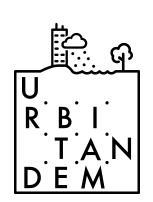RECENT POSTS
Sharing the public space with the tram in Rio de Janeiro
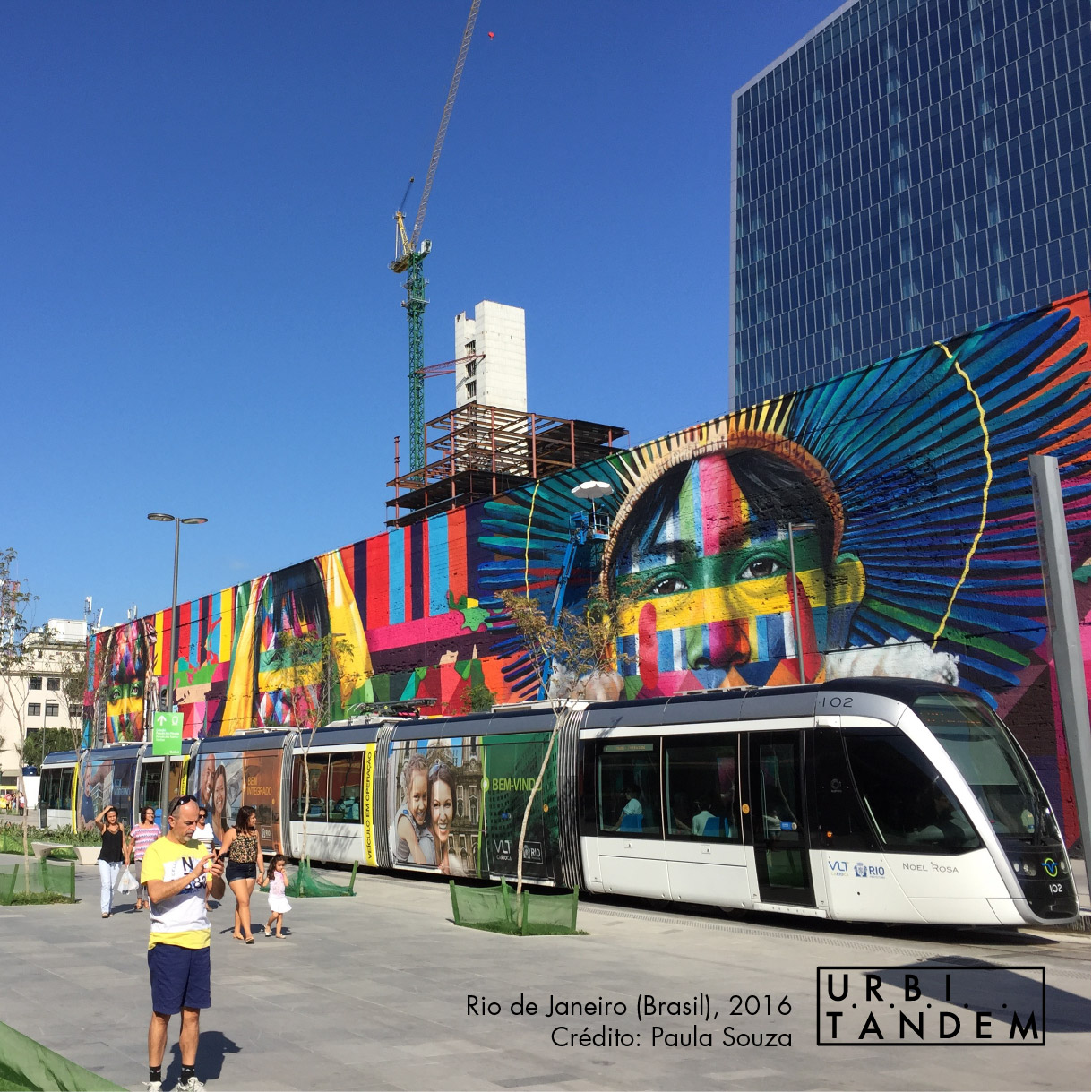
When the tram VLT Carioca started circulating last June in Rio de Janeiro society began discussing how public space is shared, as expected. The novelty brings along the fear of conflicts and it feels like this kind of transportation has never been used in Brazil. Although the technology might be new, the conviviality between trams, motorized vehicles, pedestrian and cyclists has already been part of daily routine in Rio de Janeiro – and it was substituted by buses for their flexibility of implementation and coverage. The tram system designed for the carioca capital is 28-km long, 18 of which are been operated. It integrates with other modals of public transportation, such as buses, BRT, subway, trains and ferryboats.
The website of the concessionaire responsible for the VLT Carioca brings in its “Facts and Miths” section explanations on how the modal works. It is quite simple: the tram has a driver – who speeds, breaks and honks – and pedestrians must also respect the Brazilian Transit Code. The only difference in the case of the tram is that it is quieter and walkers must pay greater attention when strolling around. That doesn´t mean the risk of accidents is inexistent, in the same way that there is with cars, buses, trucks and even bikes. But it doesn’t justify the implementation of crossing barriers either, since the maximum speed the tram achieves is 15 km/h. The integration and optimization of public space is one of the strongest points of the project which makes the best of available space, makes access and hopping in and off easier and more comfortable.
This video shows how urban design varies along the way, adjusting to the specificities of each segment. There are moments of complete integration with pedestrian use, sections when the route is destined exclusively to the tram (such as in bus corridors) and places where the road is shared with other motorized vehicles and cars can drive over the rails normally when the tram isn’t passing by. One thing worries us: the constant honking. Can you imagine how annoying? Public department implements a new technology, very silent, and drivers cannot stop using the horn to warn pedestrians of their passing by? Imagine those who walk by and even the ones to work or live along the line?
An article published by O Globo raised the question: many don’t respect the segregated lane, destined to the tram. Obviously, the question is relevant and road safety should come in first place. However, when those who read the article and haven´t had the opportunity to experience other examples all over the world, get the impression that the project has been poorly designed or that Brazilians have been badly raised. That way we thought it would be interesting to bring here other examples – a little bit of repertoire cannot hurt anyone and might qualify the debate.
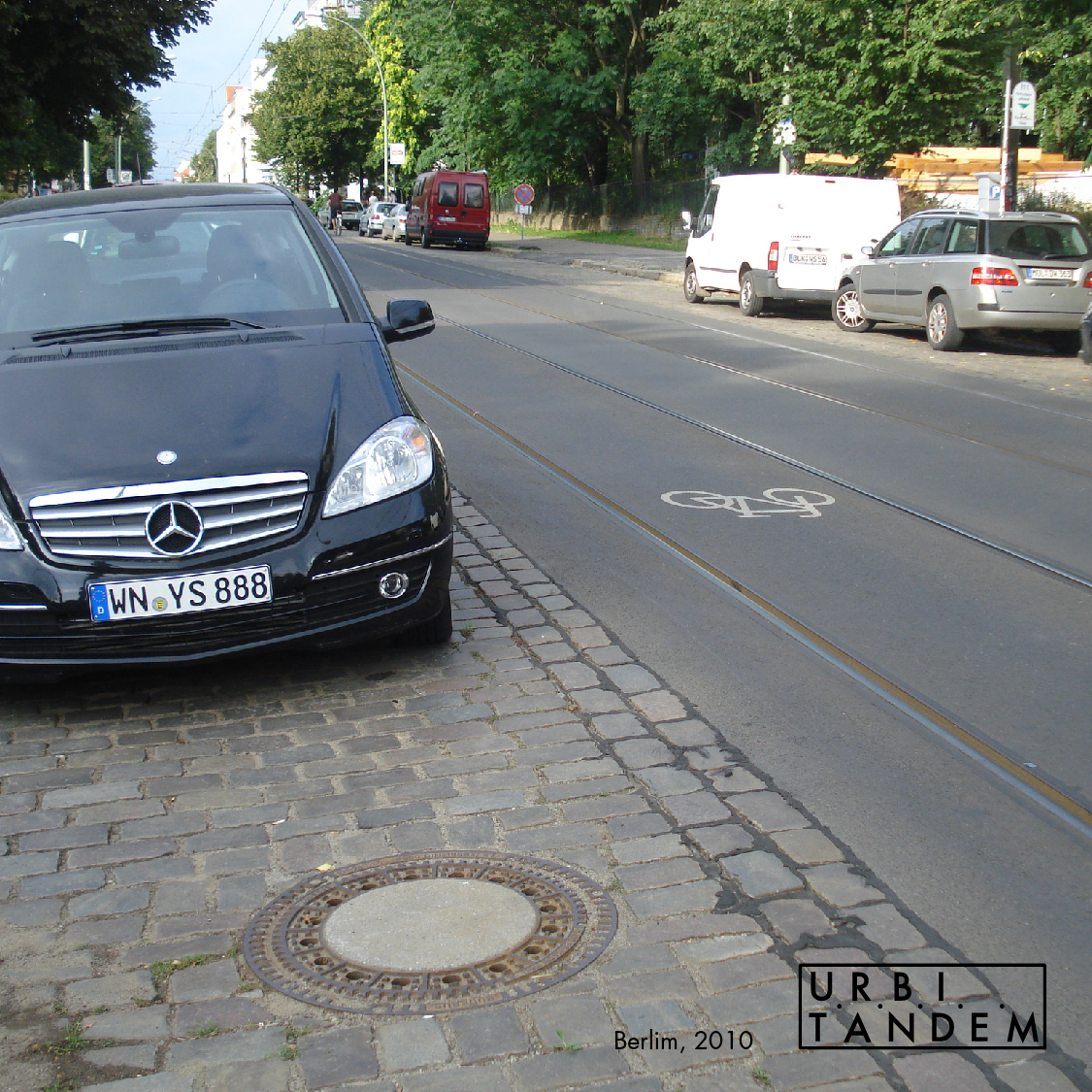
On this street in Berlin (Germany), the tram shares the road with cars, bikes and pedestrians, pacifically.

Now with the tram coming through at the same place.
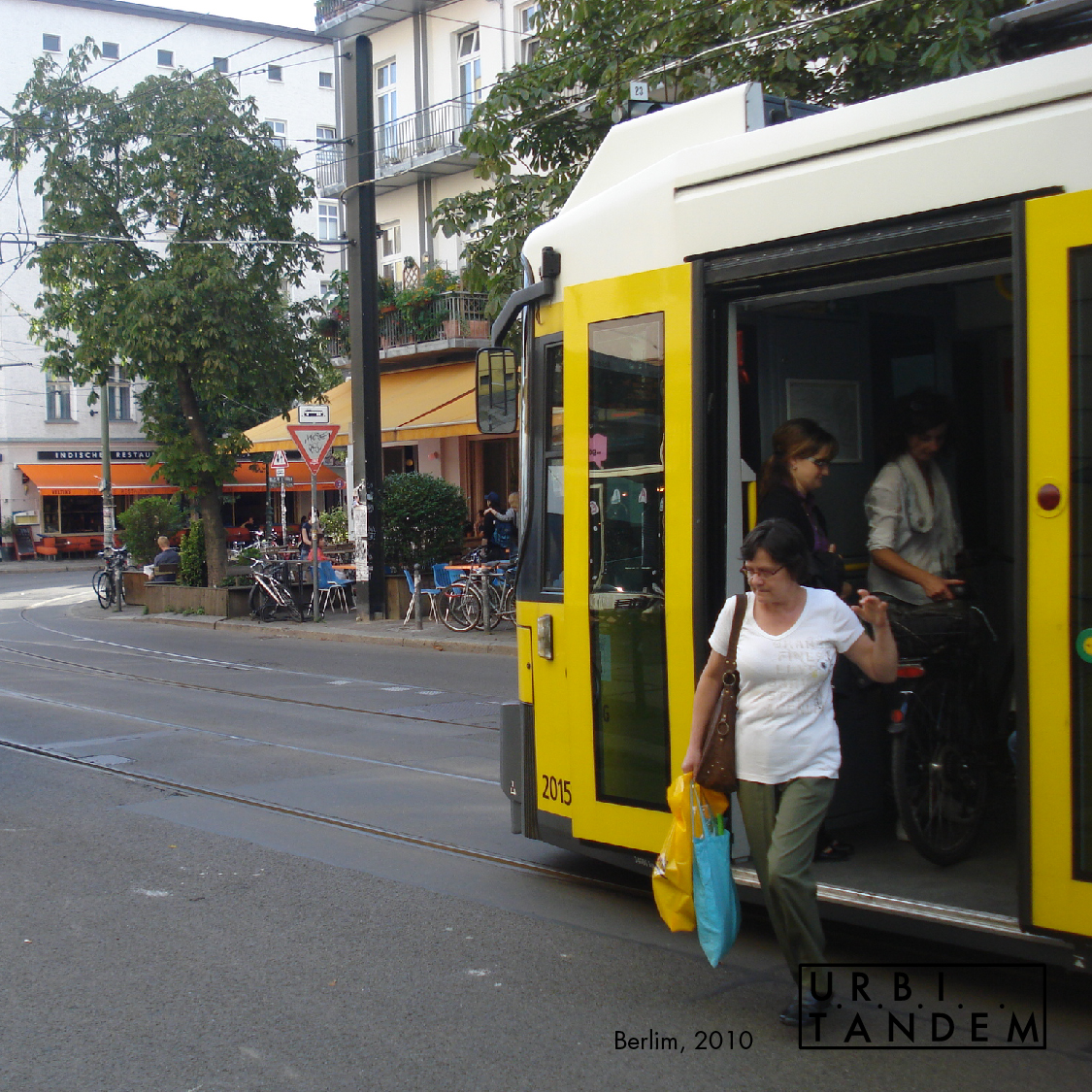
Watch how the bike goes on the tram, allowing for modal integrations.
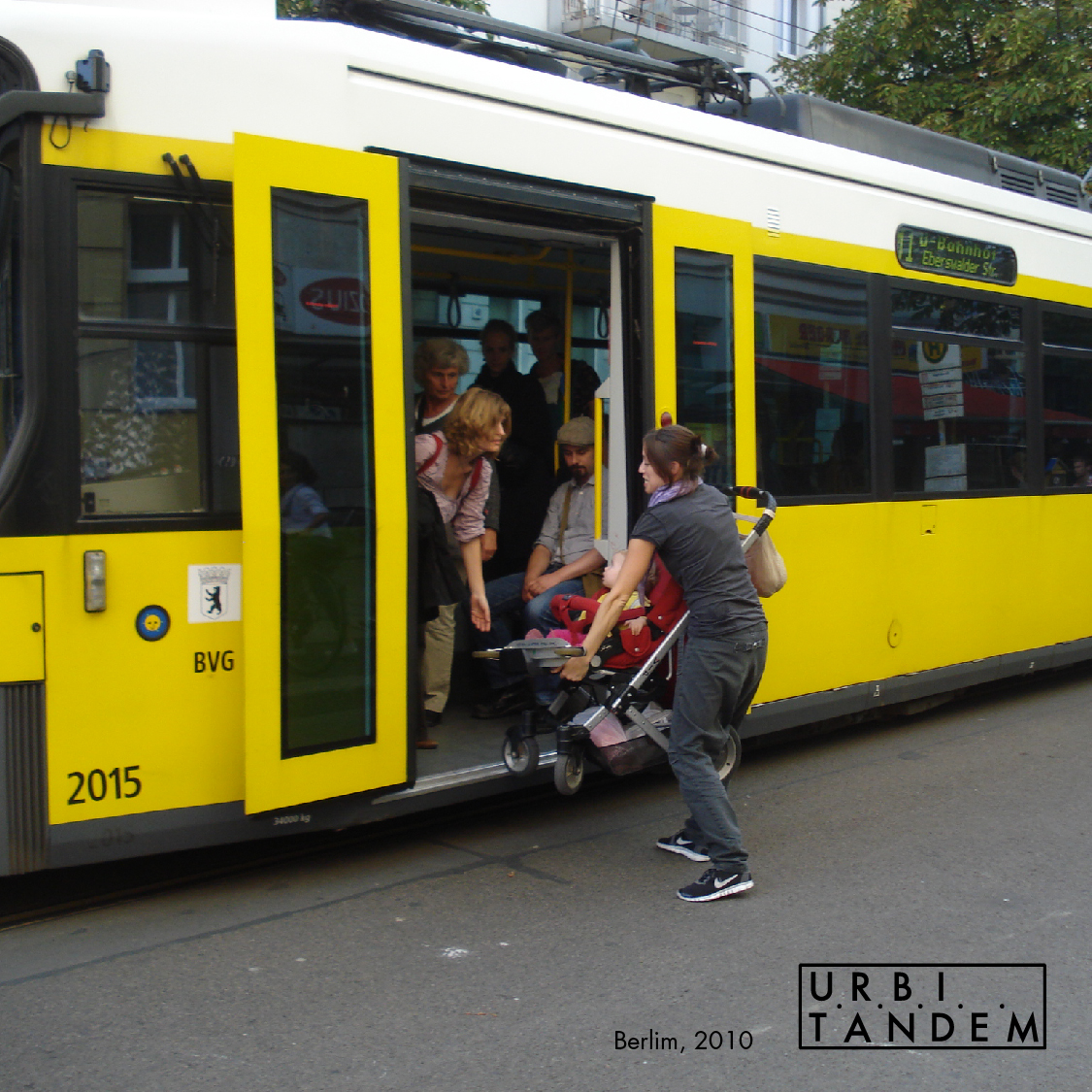
It is easy to take a stroller in the tram which, in the case of the VLT Carioca, is even easier since the sidewalk is aligned with the tram floor on the stops. Now imagine yourself getting into the bus, in Brazil, with a stroller… think about those stairs to get in and the steps inside the vehicle, not to mention the turnstile!
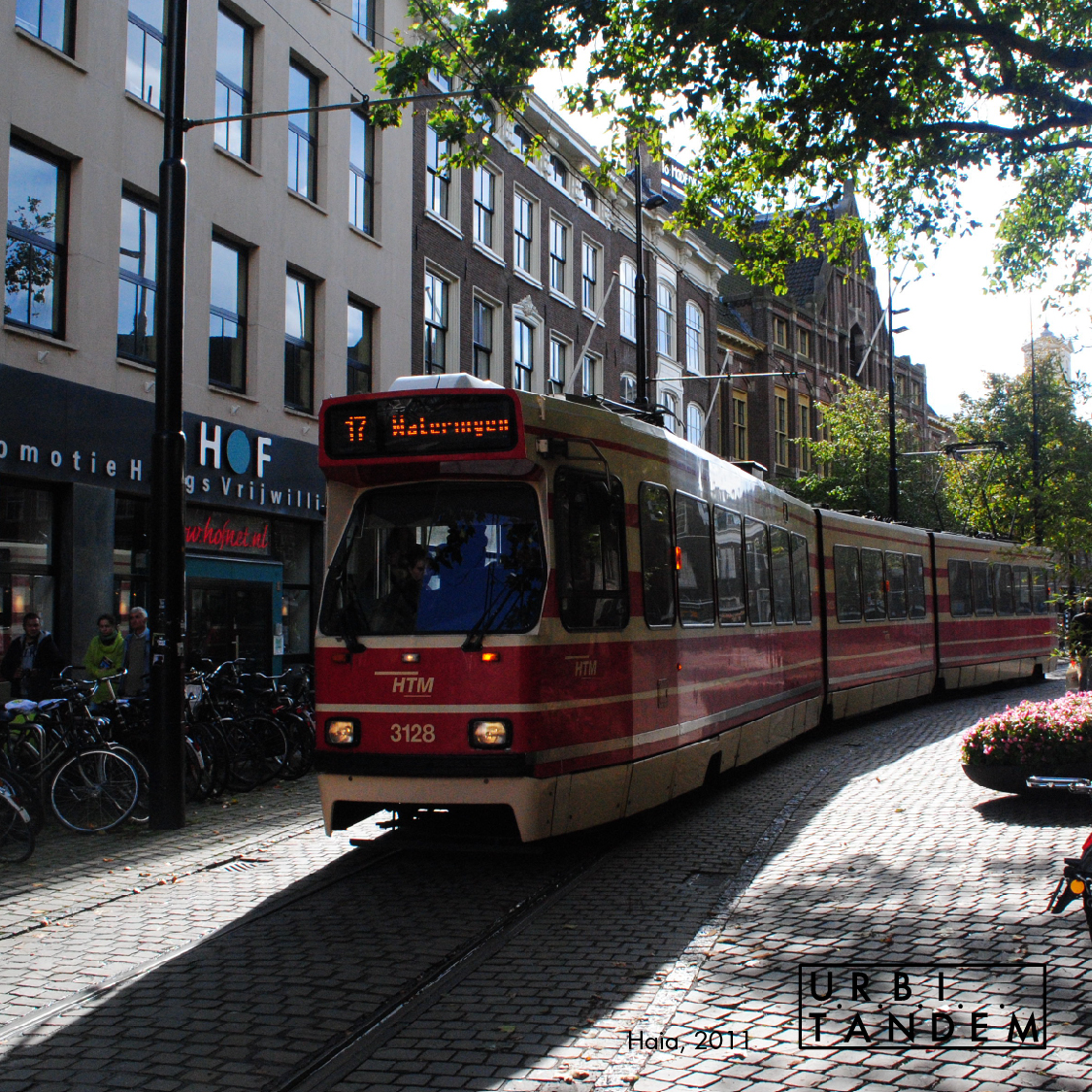
In The Hague (Netherlands), the tram also shares the space with other modals, with no physical barriers to constrain its path. The rails on the ground establish the course of the tram, tucked into the pavement with no difference in level.

We can also see that the drainage system is integrated with other projects, and landscape architecture defines a pavement that slightly indicates the course of the tram, although with the same materials and color.
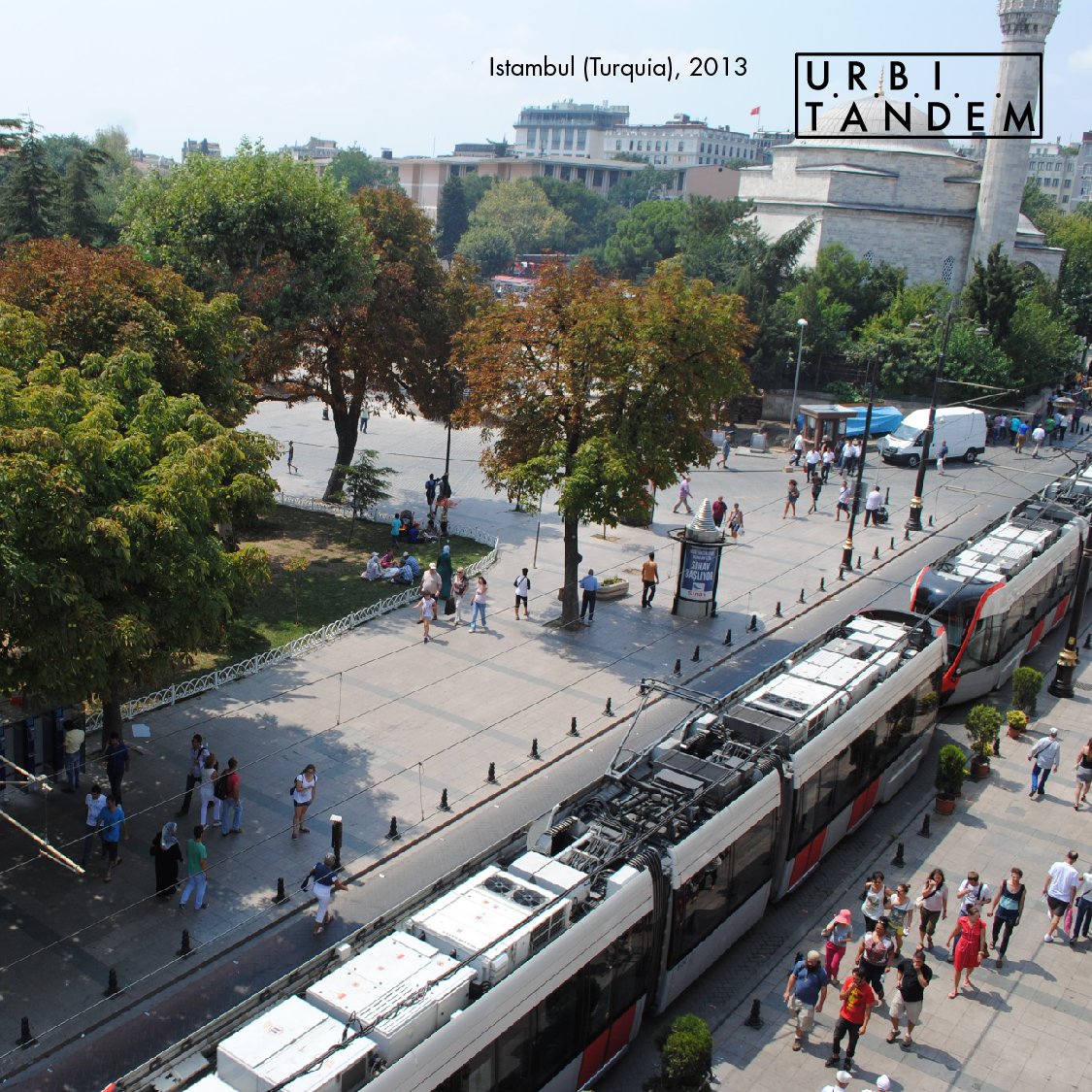
Here an example of tram in a large city comparable to the Brazilian metropolis: Istanbul. And they even have more complex situations regarding heritage and archeological sites. If they could implement trams why shouldn't we?
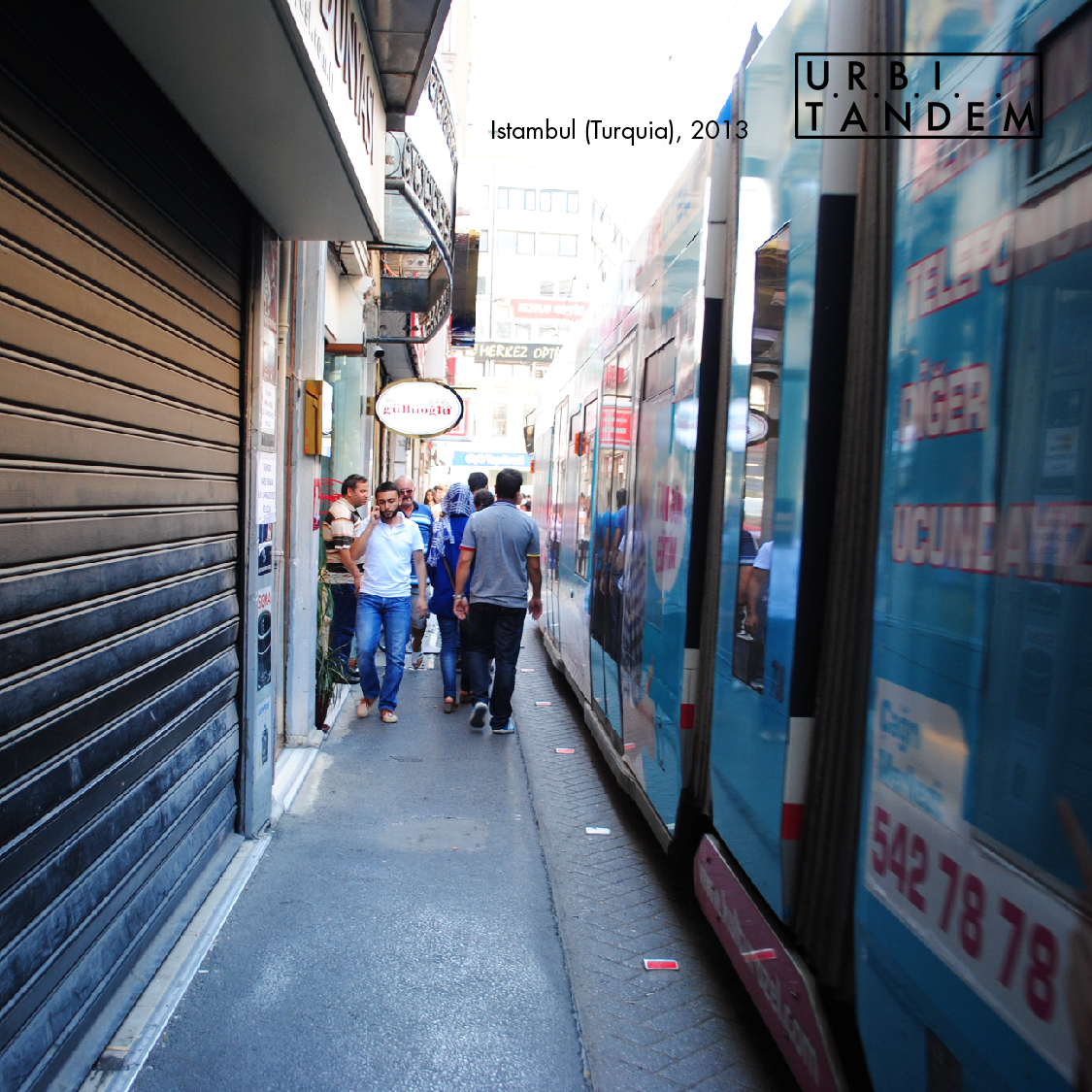
But urban design isn't always generous with pedestrians. Sometimes sidewalks become narrow, which didn't prevent the tram to be implemented.
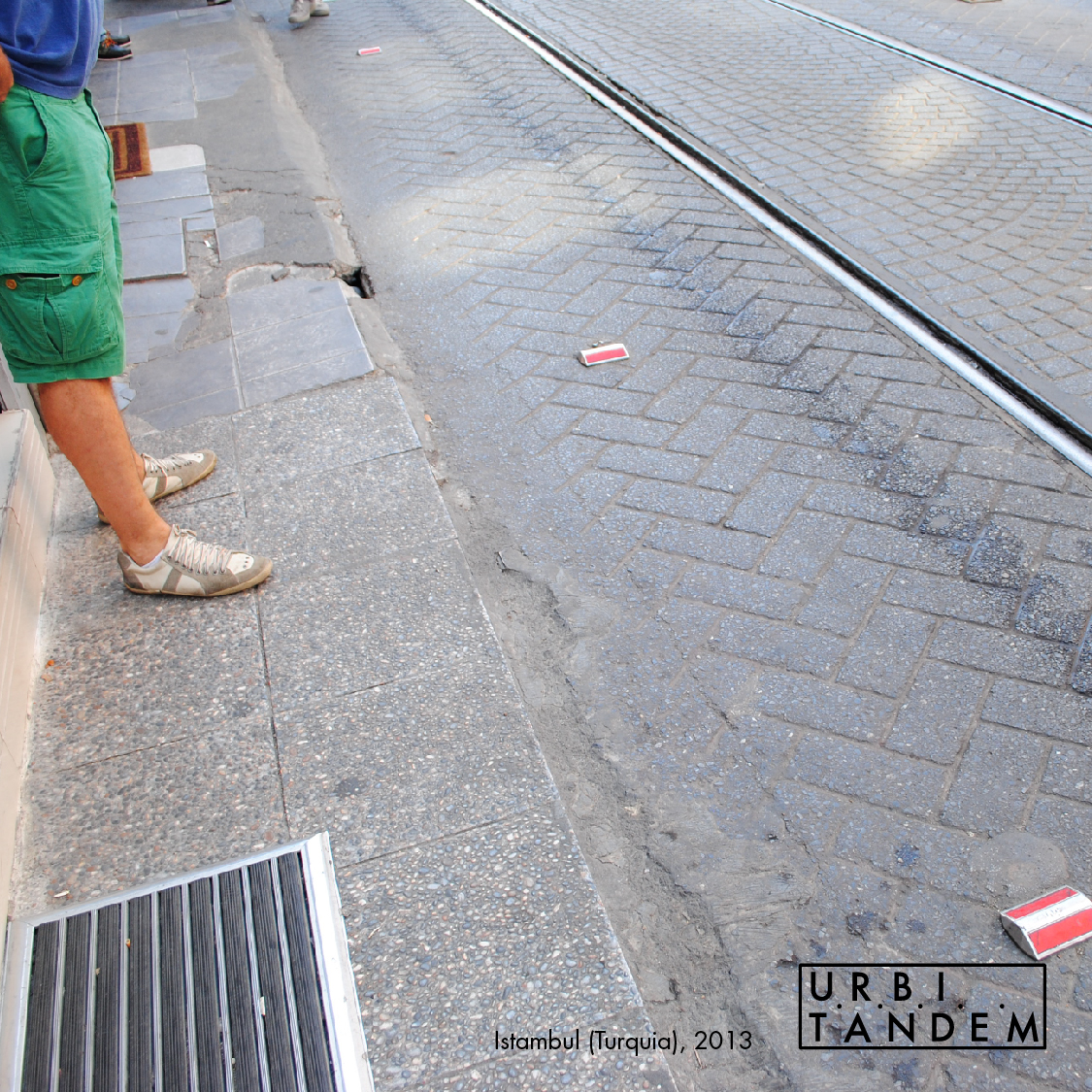
Check out this section: at this busy touristic section, the sidewalk is narrow, tiling poorly conserved (and we are obviously not complimenting on it). The tram drives right next to the pedestrian, leaving around 100m free. It feels very unsafe when you are walking towards the same direction of the tram, since the street is busy and loud and you cannot hear it coming!
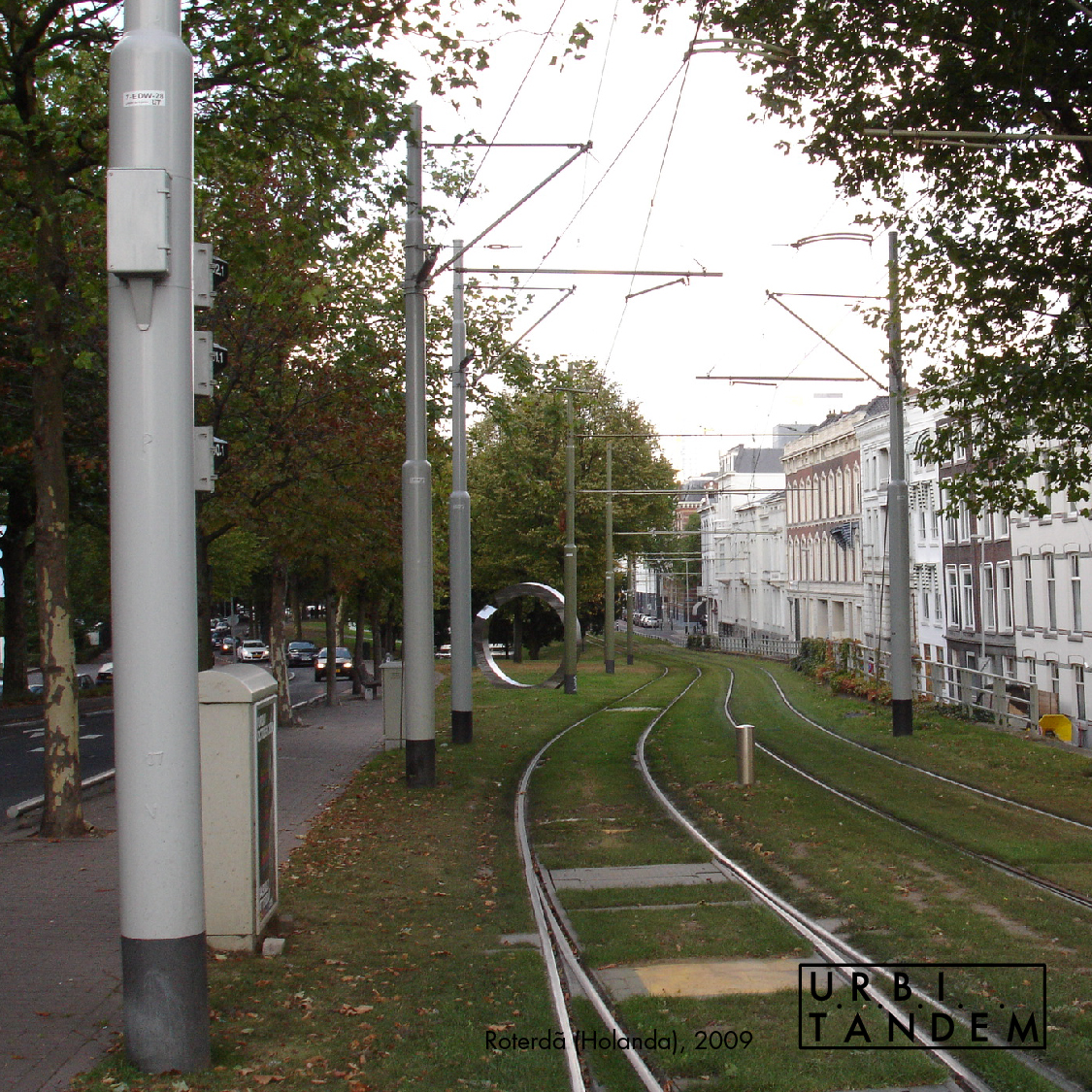
How about an example of dedicated lane, used exclusively by the tram? And if the tram circulates over the tracks, why not leave the soil permeable, without pavement?

Cars, bikes and pedestrians have their paths repeated on both sides along the tracks.
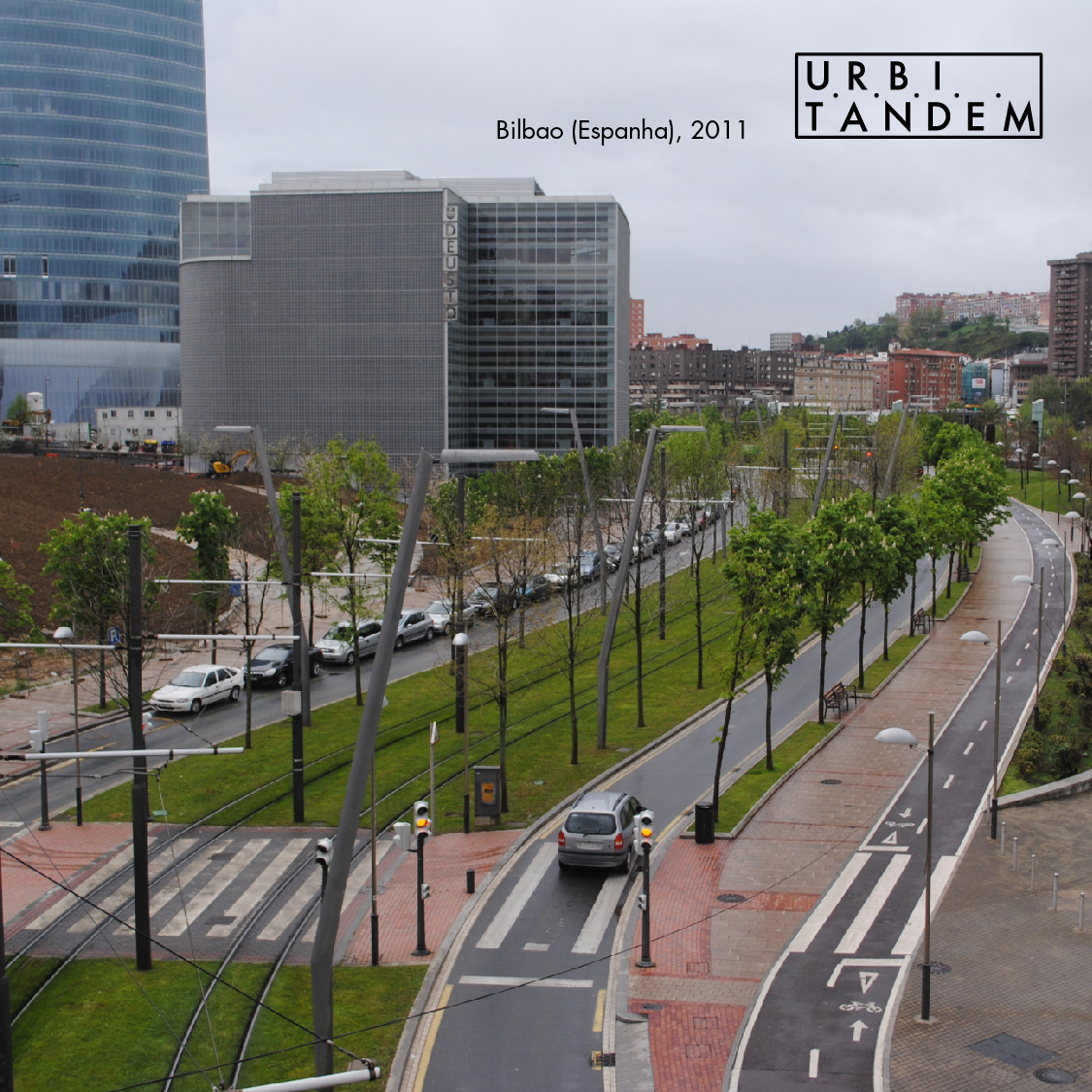
And right next to Guggenheim Museum in Bilbao (Spain), the tram tracks go along a dedicated lane, with proper signs and pedestrian crossing.
When riding the VLT Carioca, pay attention to its integration to the urban design and how comfortable your journey can be. Compare it to the other modals of transportation such as buses or monorail. Each has its advantages and disadvantages – which one would you rather use on each route made along your city?
LEAVE YOUR OPINION
maria
20.09.16 às 16:12
teste
Tina Gabrich
19.08.16 às 14:10
Não sabia que já tínhamos VLT aqui no Brasil! A primeira vez que vi foi em Strasbourg, em 2001. Achei sensacional, pelo silêncio, praticidade, interferência mínima da sua estrutura nas pistas e principalmente a beleza dos veículos! Na época mereceu várias fotos!! Recentemente vi em Sevilha e ainda continuo encantada. Espero que a população do Rio aceite bem este transporte e que conviva com ele harmoniosamente como vemos acontecer em outros países!





